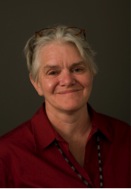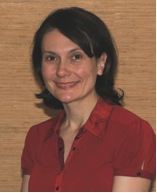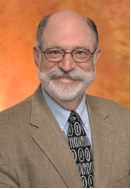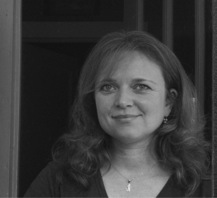
ASOR ELECTS FOUR TRUSTEES DURING THE 2012 MEMBERS’ MEETING AT THE ANNUAL MEETING
This year, there were eight people who ran for four slots on the ASOR board as members of the Class of 2015. The election took place on November 16, 2012 at the Annual ASOR Members’ Meeting which is held during the Annual Meeting. The general membership elected two individual trustees, and institutional representatives elected two institutional trustees:
- Susan Ackerman (re-elected as an institutional trustee)
- Catherine Duff (elected as a first-time individual trustee)
- Barry Gittlen (re-elected as an institutional trustee)
- Ann-Marie Knoblauch (re-elected as an individual trustee)
Susan
Susan’s vision for ASOR: “During my now six years on the Board, what has impressed me the most is ASOR’s ever-growing vitality. The three key components of our organization — the annual meeting; publications; and our support of archaeological excavations and excavators — are all thriving, and our adoption of our new Strategic Plan and the success we anticipate for our on-going Capital Campaign position us to flourish even more. To be sure, significant challenges lie ahead, in particular, identifying a successor to our venerable Board Chair, P. E. MacAllister. But our ability to meet significant challenges in these past few years—most important, getting our financial house in order—makes me confident that ASOR can continue to prosper, and I would be honored to continue my work as a Trustee in aid of the organization’s well-being.”
Catherine Duff 
Catherine’s vision for ASOR: “ASOR has played a pivotal role in my development as a graduate student and young scholar, since it has provided a critical and thoughtful venue for presenting my doctoral research at Annual Meetings, along with scholarships to attend these meetings. The opportunity to give back to a professional organization as an ASOR Board of Trustees member is one I value greatly and will perform with diligence and enthusiasm. Since becoming a member of ASOR more than 10 years ago, I have observed tremendous growth, renewal and vitality in our organization and its members, especially graduate students and young scholars. I wish to continue this progress and look forward to working with you and sharing my ideas about positioning ourselves to attract and encourage even more young scholars to ASOR.”
Barry Gittlen 
Barry’s Vision for ASOR: “ASOR has grown stronger and more financially stable over the past three years. Fiscal and administrative evolution can help keep ASOR vital but we need to grow further. Priorities for the future (not in any particular order) should include: a) Attract and expand academic membership (both institutional and professional); b) Encourage and educate new colleagues, nurture their fresh ideas and new scholarship; c) Expand popular appeal both for itself and as a means of maintaining financial vitality; d) Continue and expand outreach to the K-12 community (this is how we create our future!); e) Support ASOR publications’ development of new modalities of presenting the results of archaeological and textual research; f) Seize the opportunities these unsettled times in our sphere of interest provide for the publication of survey and excavation data; g) Actively promote our brand within our own institutions and beyond so that anyone wishing to know anything about the ancient Near East will instinctively turn to ASOR.”
Ann-Marie Knoblauch 
Ann-Marie’s Vision for ASOR: “As a scholar trained in classical archaeology, I am especially interested in the links and cultural exchange between ancient Near Eastern cultures and the western Mediterranean and how this exchanged manifested itself in the material culture. I believe our study of the ancient Near East is enhanced by balancing and integrating two views: one that appreciates the unique identities that comprise the cultures from this part of the world; with one that seeks to understand the ways in which cultures engage, interact and form part of a larger whole. To me, the success (and value) of an organization such as ASOR is the ways in which it can serve to promote both the uniqueness of each culture as well as the compelling insights we gain from exploring the intersections among them.”